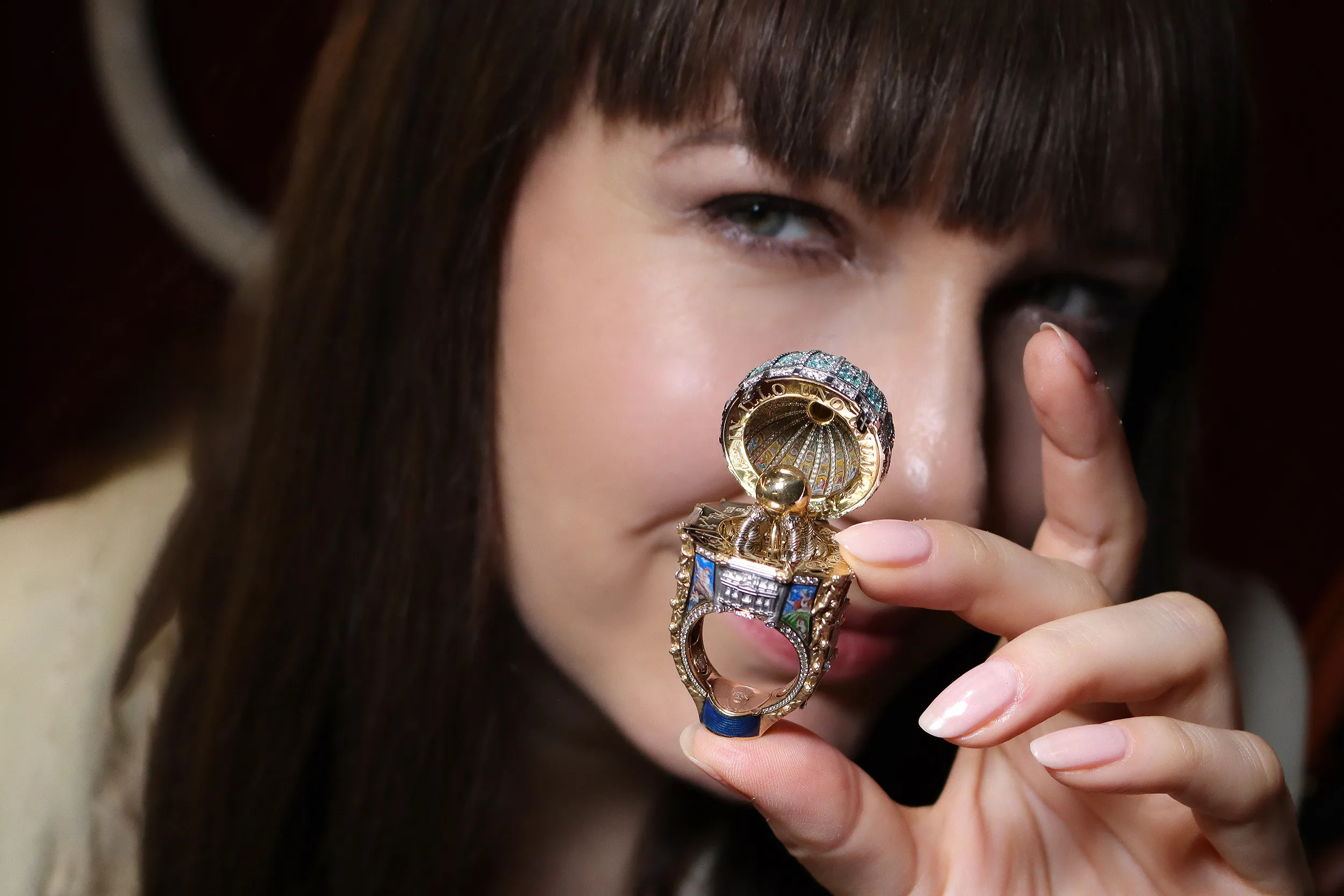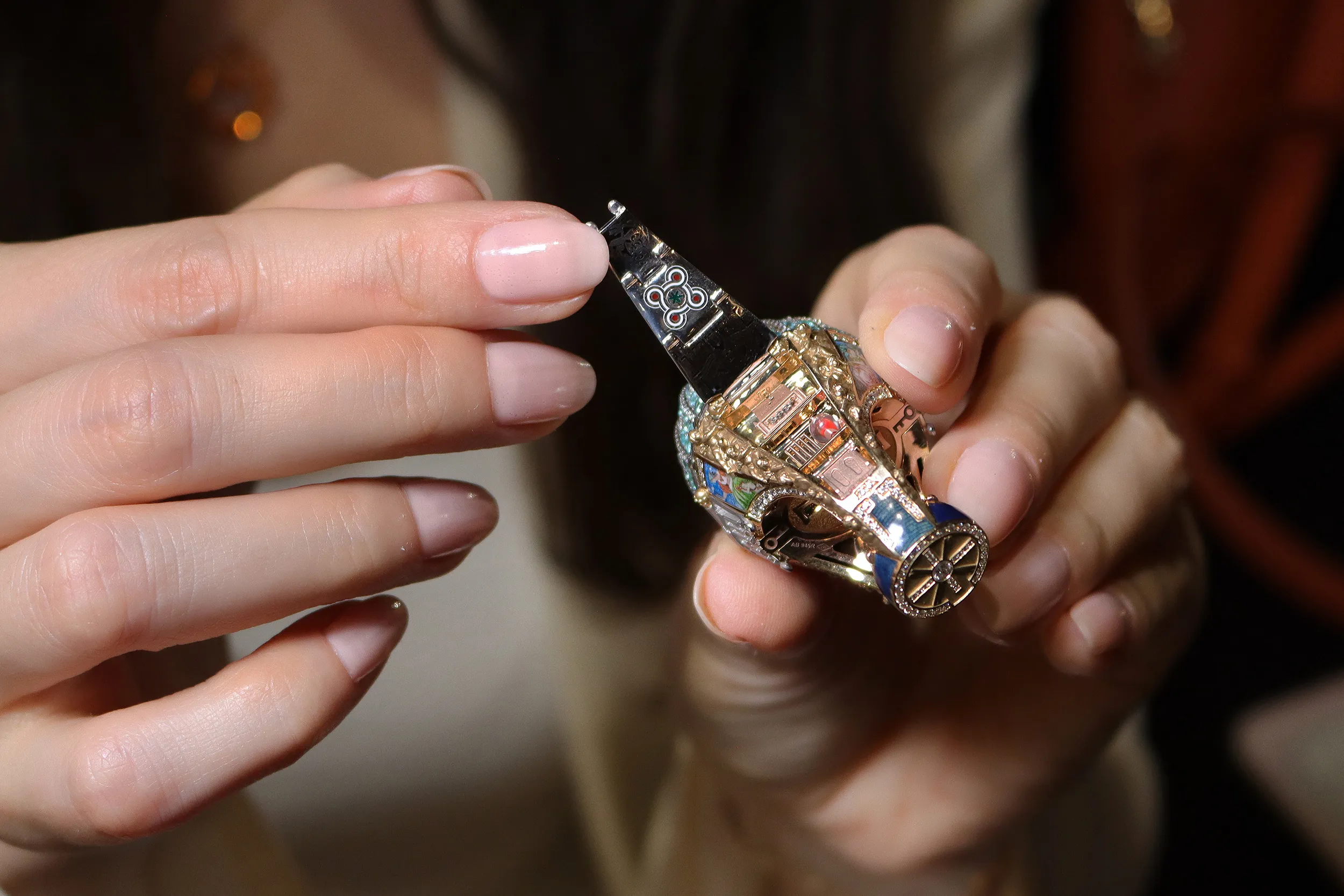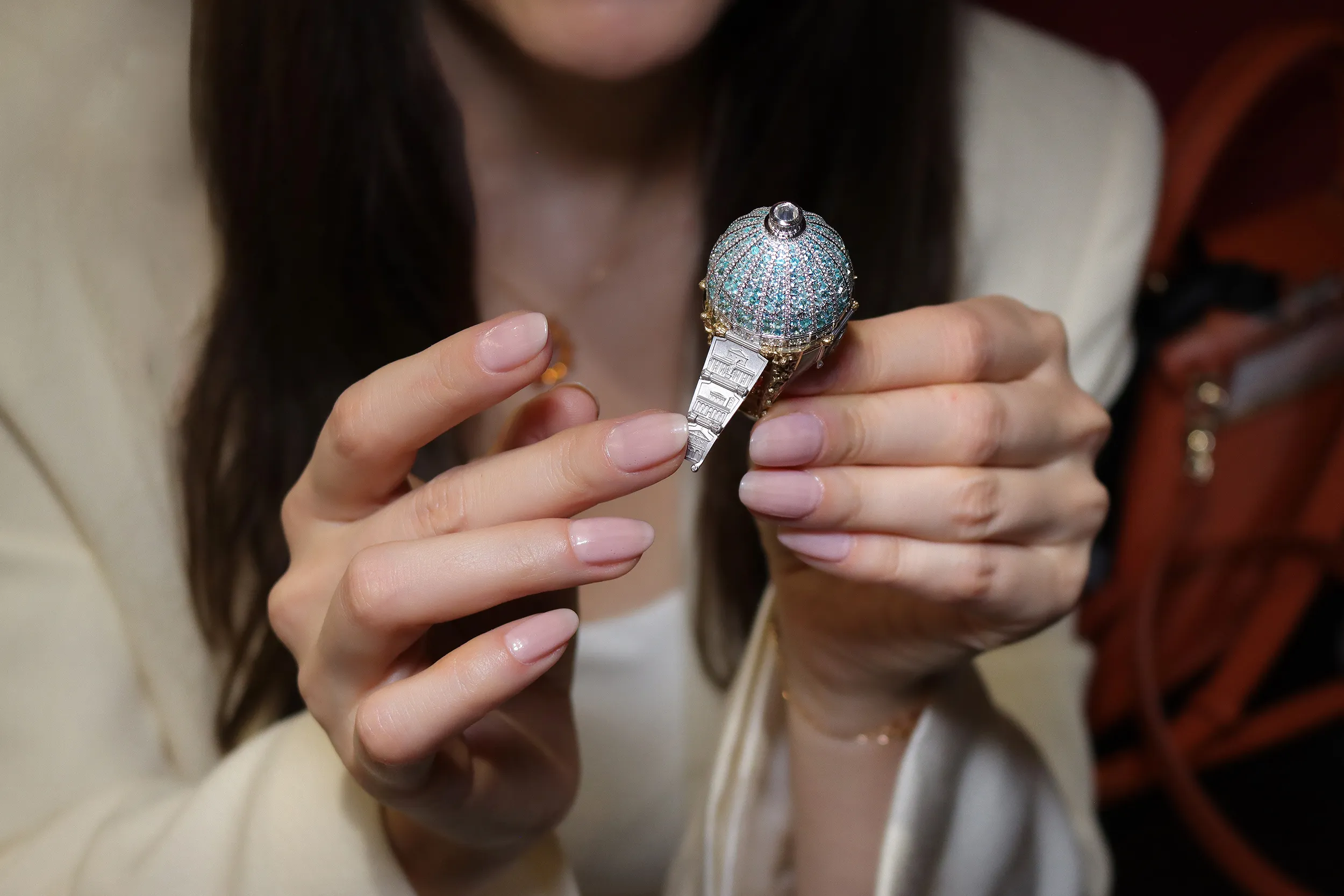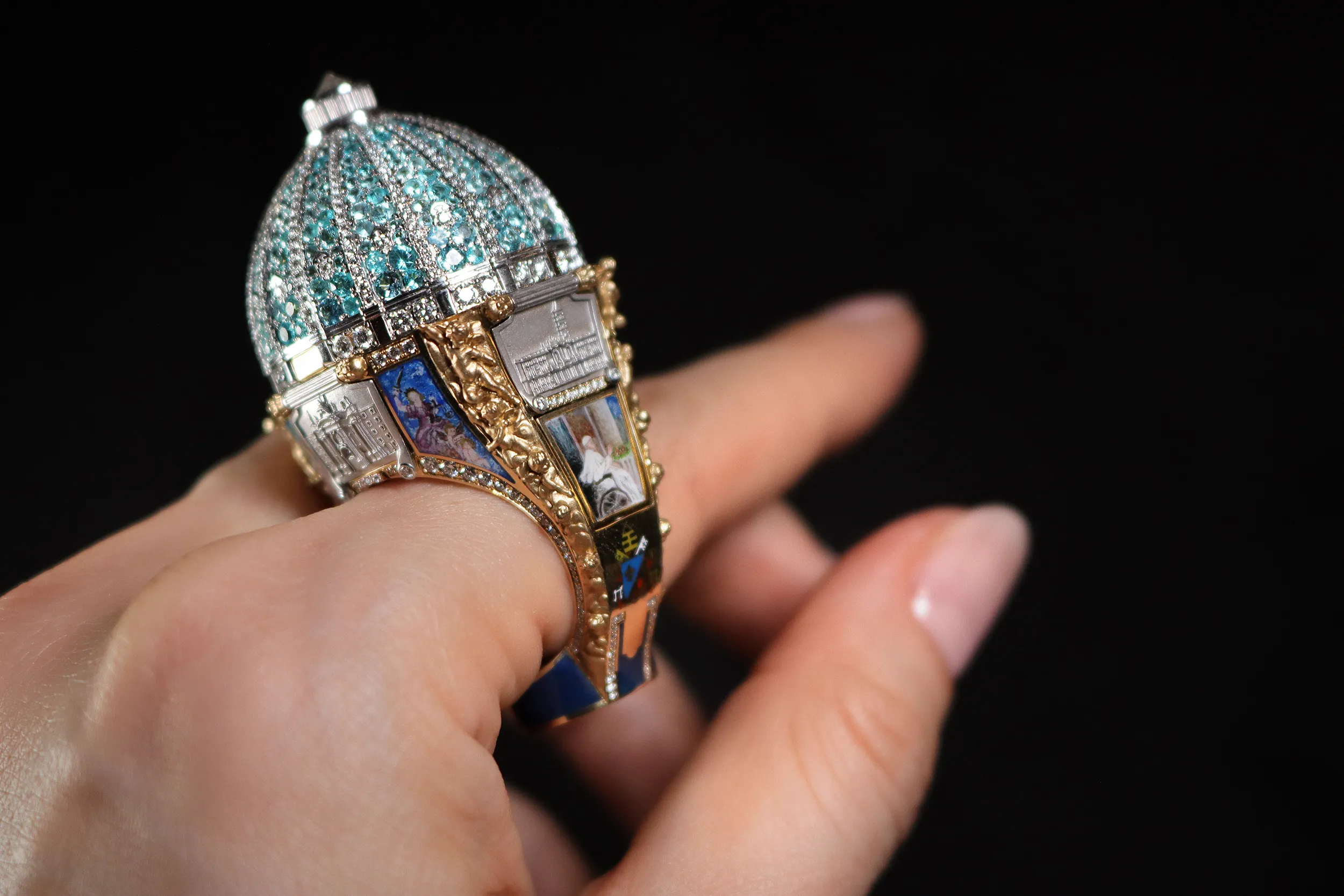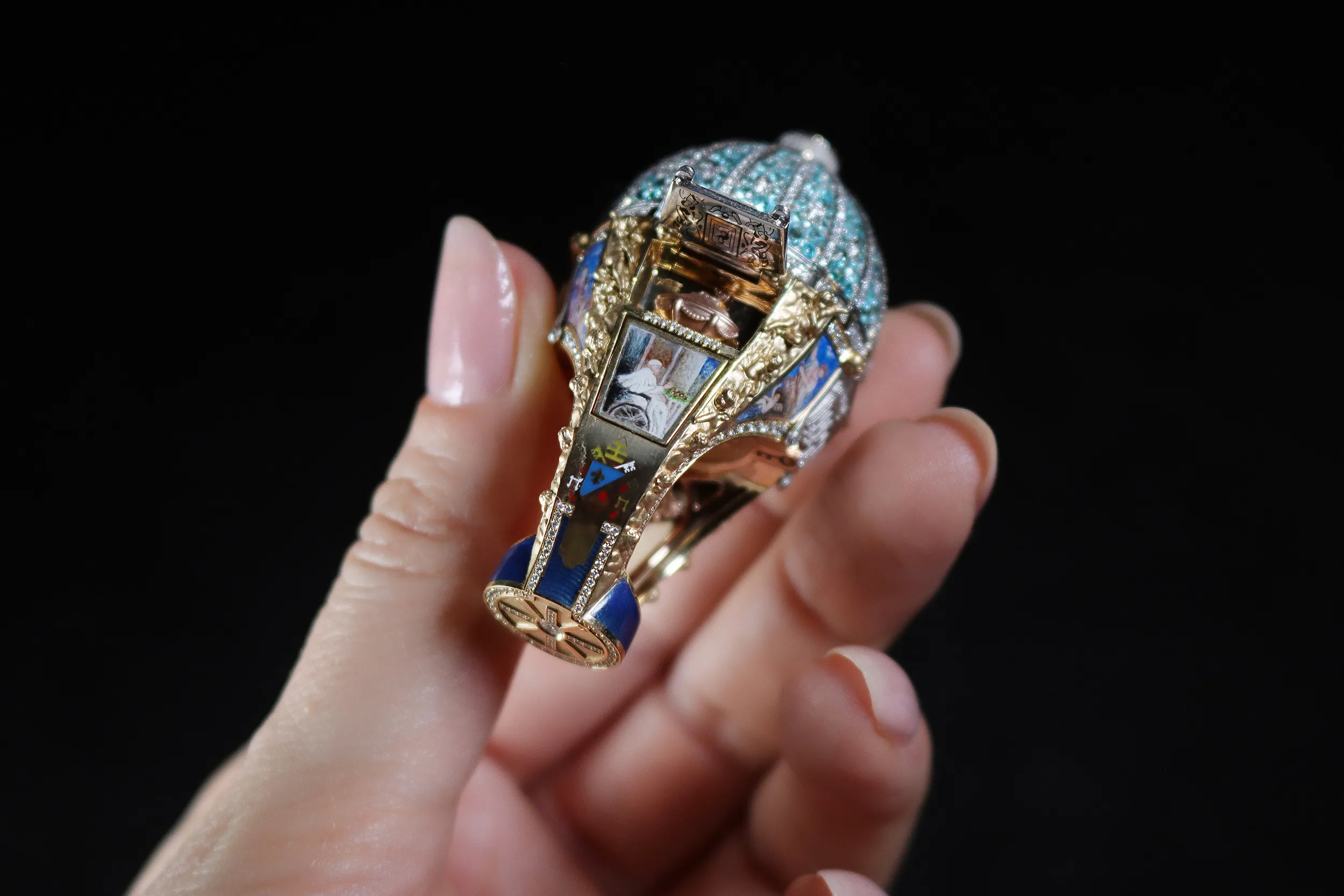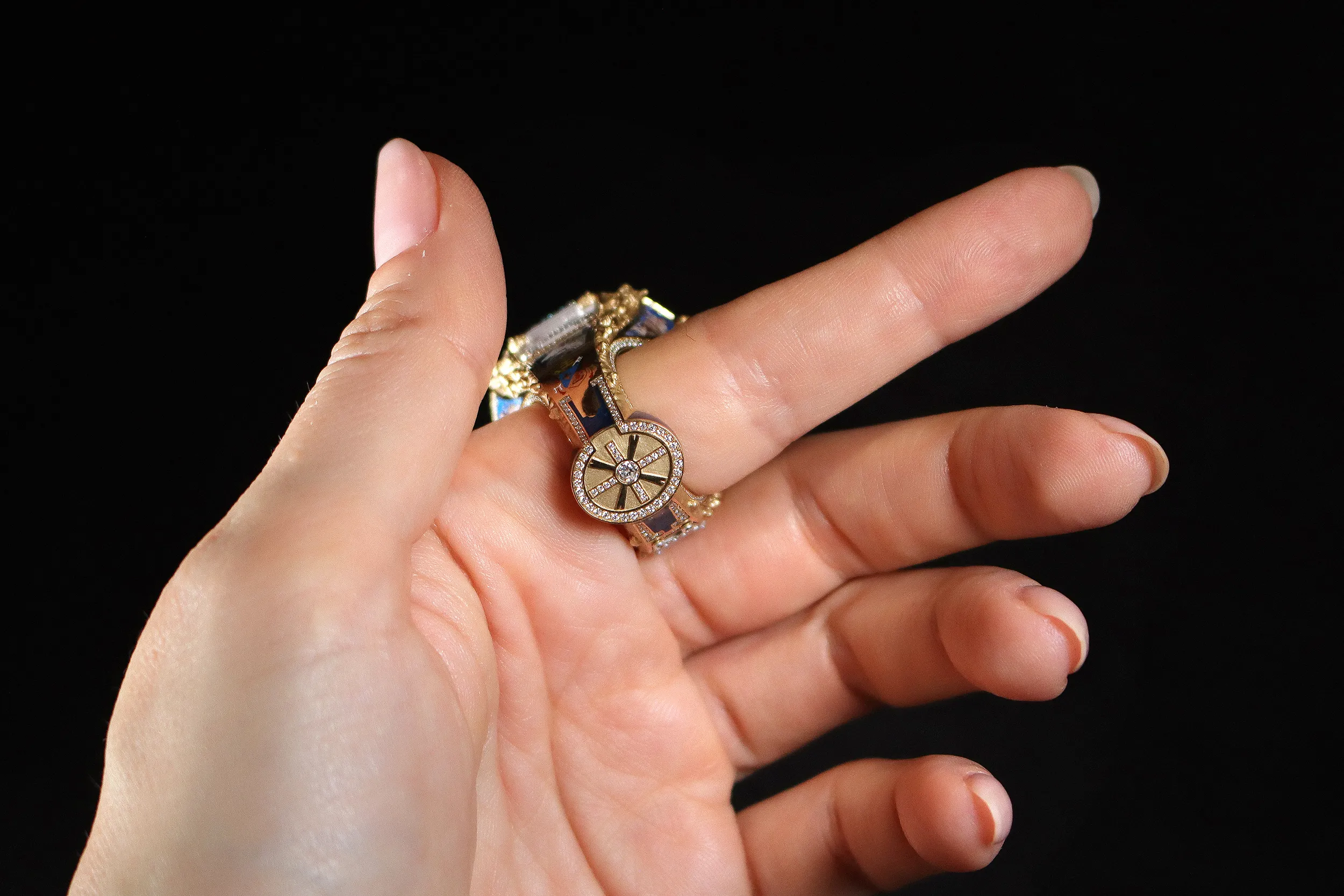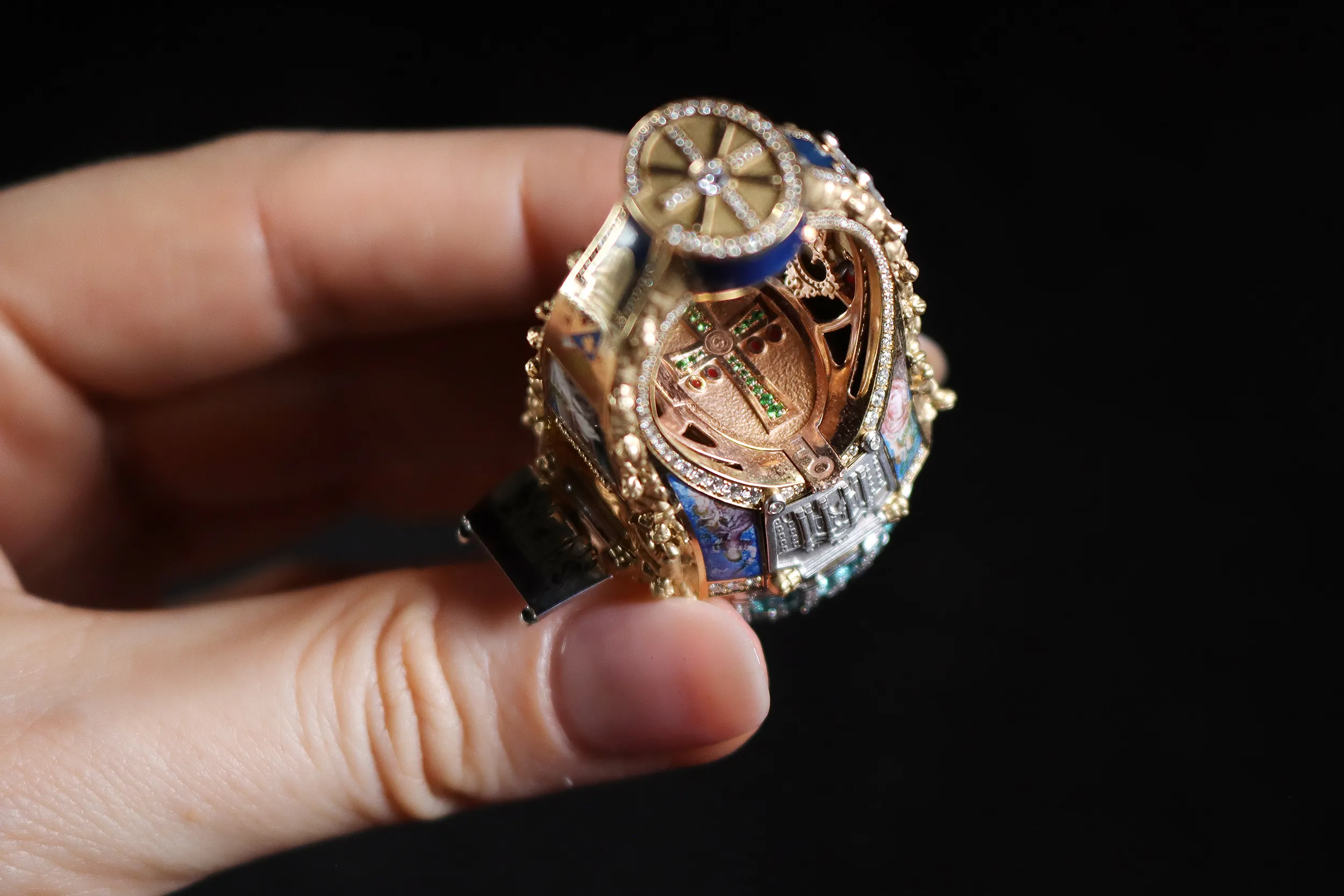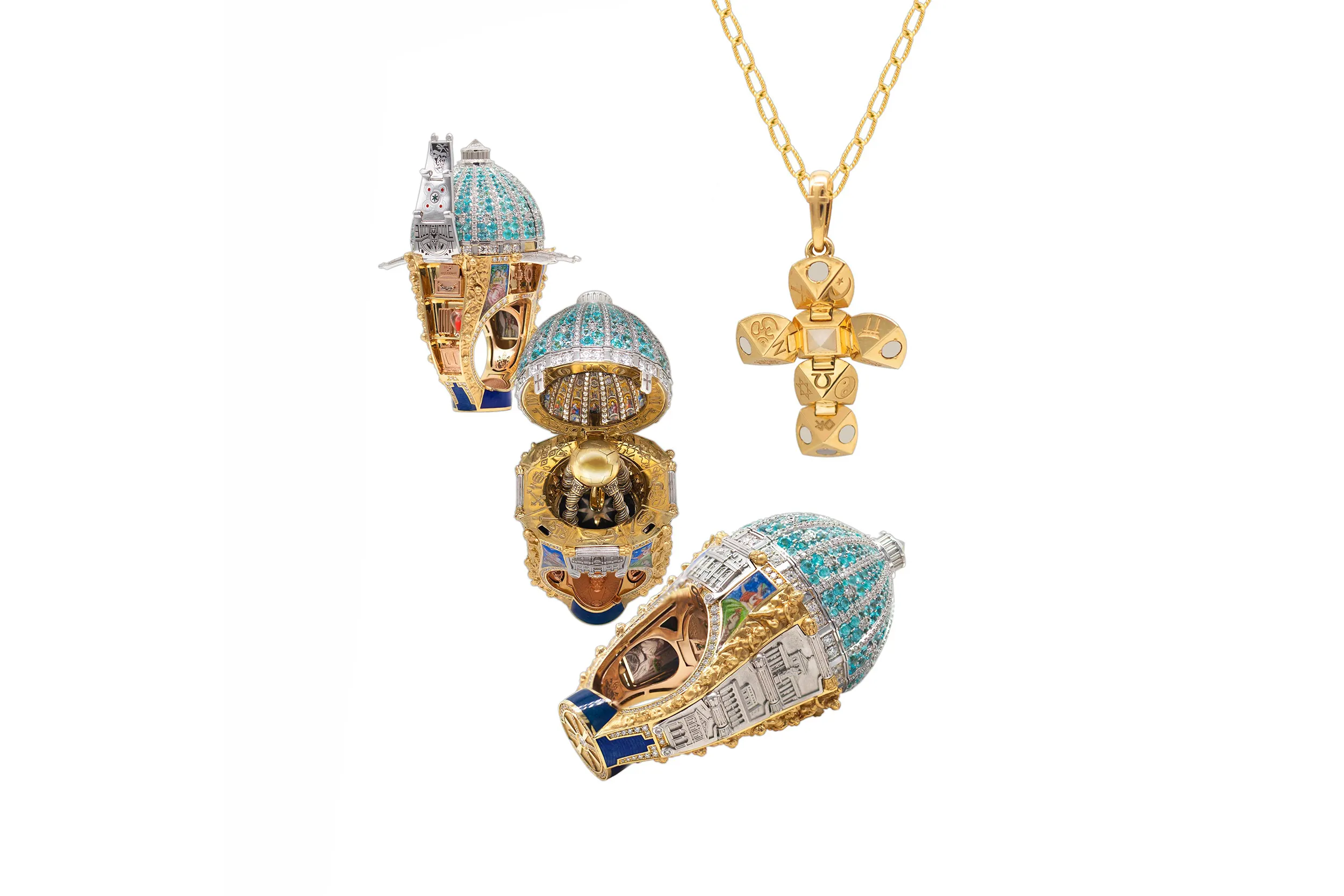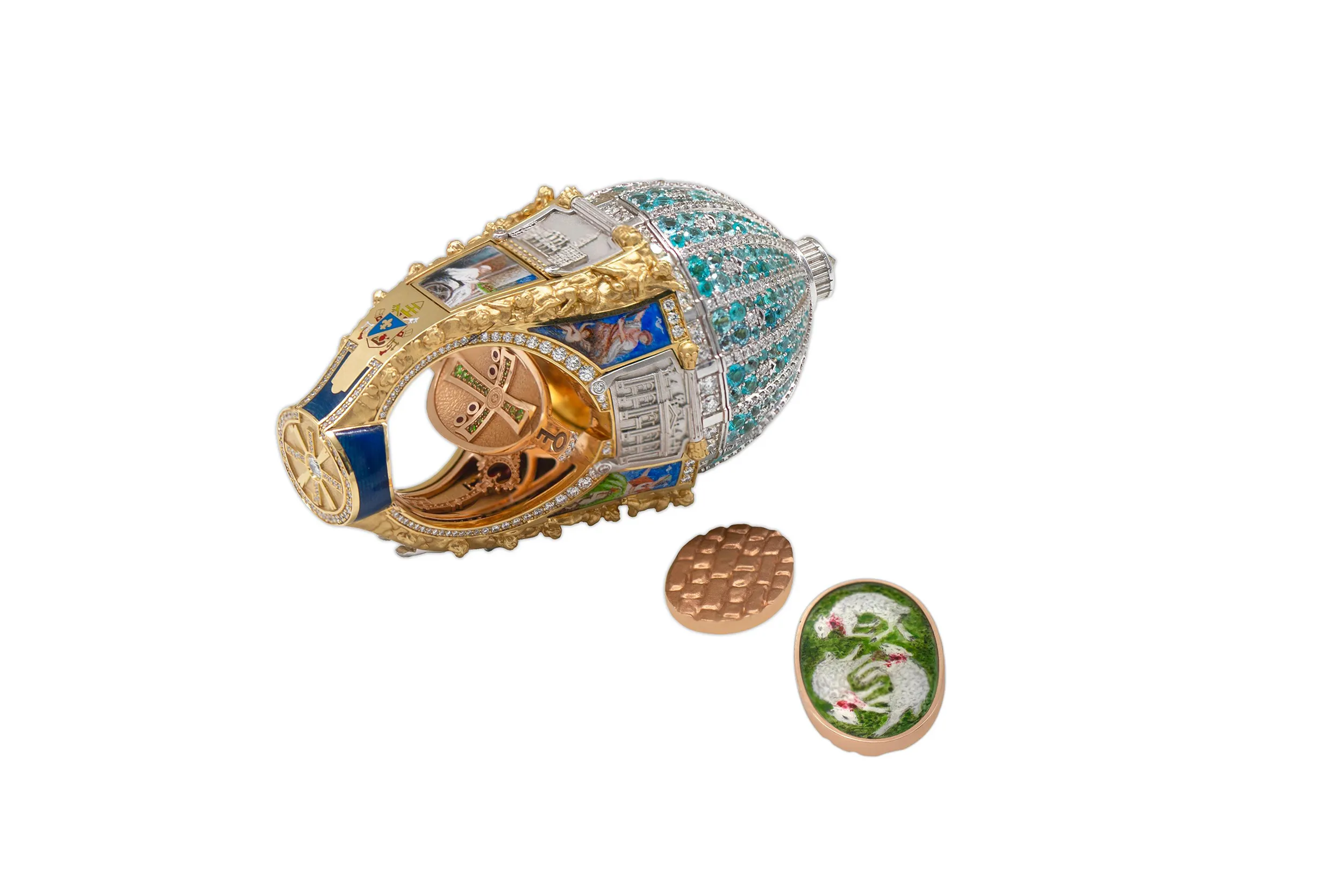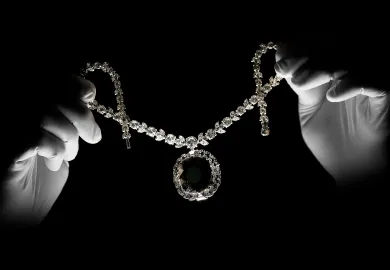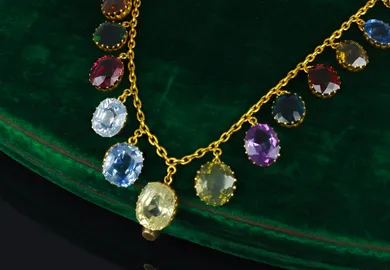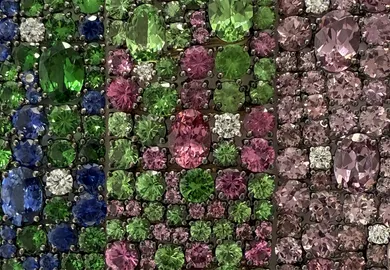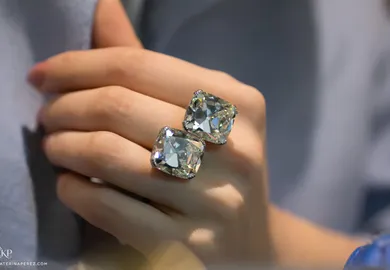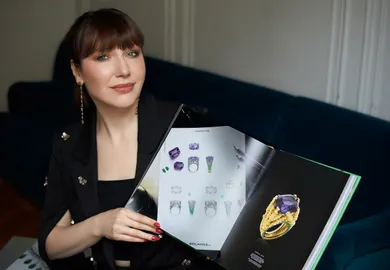
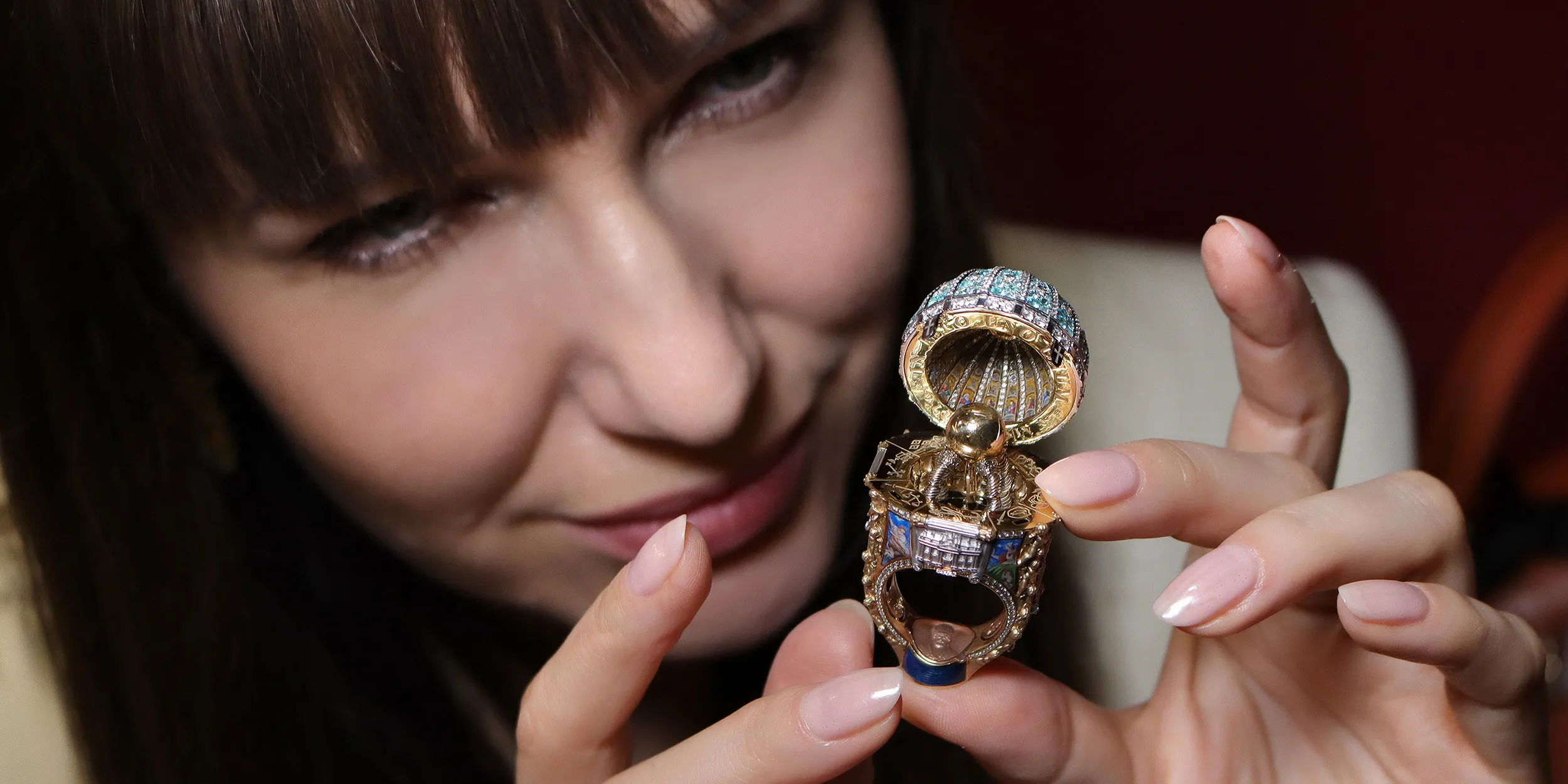
Jewel of the Month: Alessio Boschi’s Jubilee Ring
Imagine a jewel that functions as both relic and revelation—this is the world Alessio Boschi invites us into with the Jubilee Ring. When the Italian jewellery designer placed it in my hands earlier this year, I turned it over and over, studying its tiny details as I listened to the stories Alessio had woven into them. A miniature cathedral, a spiritual journey and a love letter to humanity, all condensed into one extraordinary work of art, it is, like all Alessio’s creations, a veritable encyclopaedia of art history and craftsmanship, underpinned by a deep belief in love, faith and the human spirit.
Created as a tribute to the Catholic Holy Year, or Jubilee—a period of spiritual renewal celebrated every 25 years—the Jubilee Ring is far more than a religious homage. As Alessio explained the concept to me, I realised that its message is deeply universal. It is about faith in a broader sense: in art, in craft, in compassion and in the enduring capacity of human hands to create beauty that unites rather than divides.
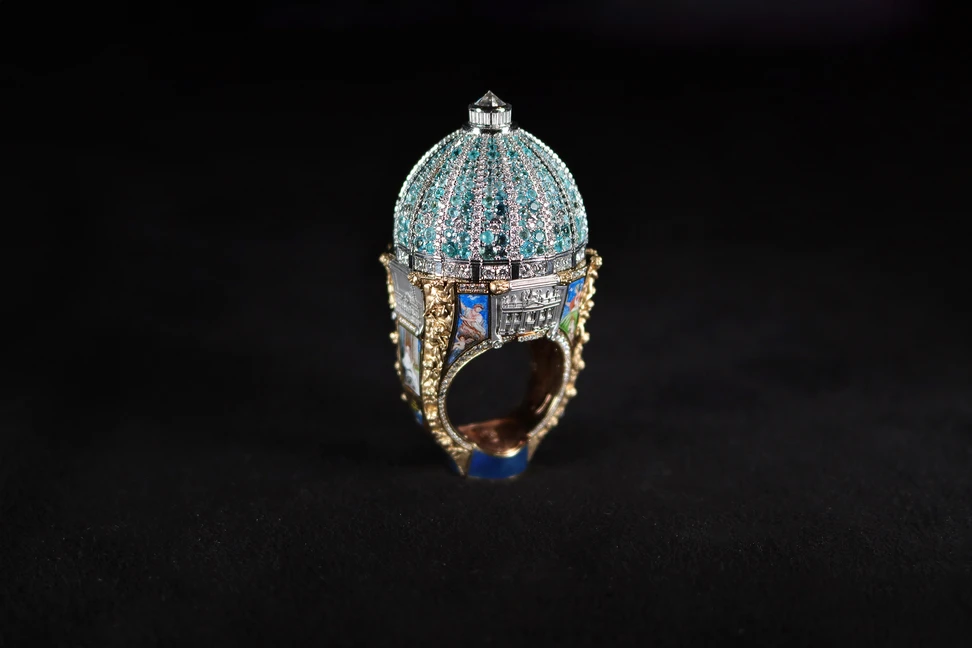
Italy’s Alessio Boschi created the Jubilee ring to honour the Catholic Church’s Holy Year, celebrated every 25 years
The Pilgrim's Journey: Seven Basilicas in the Palm of Your Hand
“The story of the Christian Jubilee goes back to 1300, when Pope Boniface VIII proclaimed the first Holy Year,” Alessio told me as he began to reveal the ring’s hidden worlds. Its narrative unfolds around a pilgrim’s journey to Rome’s seven major basilicas, each represented by a tiny door, or porta sacra, along the shank. Open one and you’ll discover a tiny bas-relief of the church’s façade, carved by a jewellery atelier in St Petersburg with whom Alessio has long collaborated. Also hidden behind these doors are relics of Christian martyrs, many brought to Rome by St Helena, mother of Emperor Constantine, creating a tangible link to centuries of devotion and belief.
This journey through time continues as the ring pays homage to the Italian Renaissance, drawing inspiration from the masters Raphael and Michelangelo. In one of my favourite details, Alessio included a bas-relief of St. Eligio’s Church, dedicated to the patron saint of goldsmiths. It’s a knowing nod to his craft and a secret handshake to those who dedicate their lives to working with fire and metal to create jewels such as this one. Alongside is a relic crafted from an 18th-century stamp, while the tiny carved piazza on the reverse of the door carries a message of reconciliation and unity for all people.
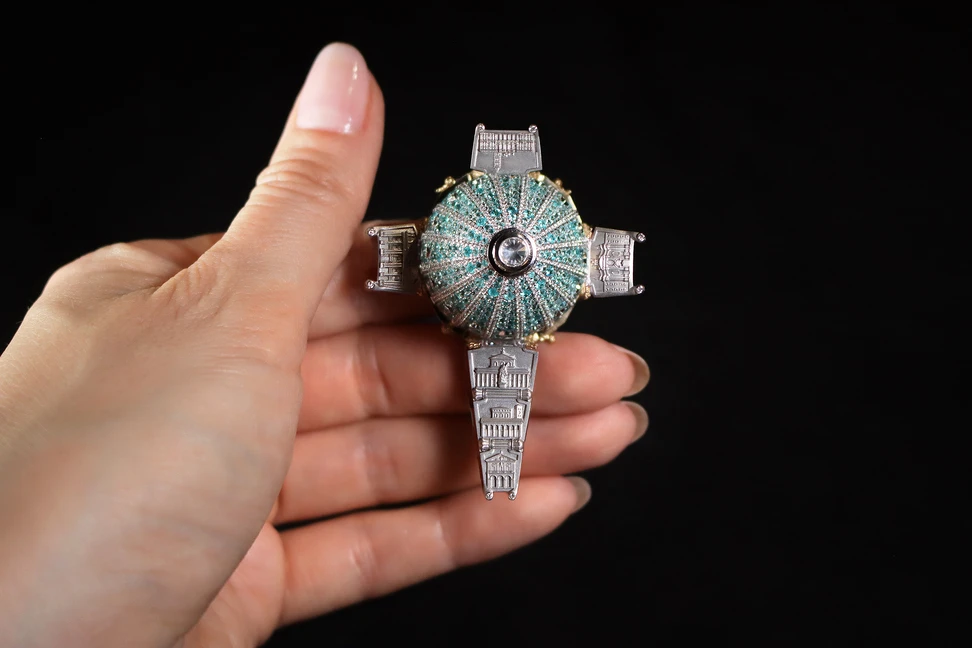
The radiant dome is set with Paraiba tourmalines and diamonds
A Palette of Antiquity and a Dome of Wonders
The material choices are a historian's dream, beginning with the luminous blue pigment. It is Egyptian blue, the world’s first synthetic colour, created over 5,000 years ago and reportedly rediscovered by Raphael around 1518 and used in the frescoes of La Farnesina in Rome. The warm brown tones are rendered in walnut ink from the Persian Isfahan School of Miniatures, applied by the steady hand of master miniaturist Arash Groyan. Every hue and every texture forms a continuum through history, uniting ancient Egypt, Renaissance Italy and Persia.
Many more details are featured in the ring's gallery, such as the Coat of Arms of Boniface VIII, the first pope to create the Jubilee in 1300, mirroring the papal crest of Leo XIV. Additionally, there's a miniature copy of the last surviving Vatican Key of St. Peter, dated 1575. Below the centre, a door opens to reveal the Crux Vaticana. These decorations, encrusted with gemstones, hide a fragment of the wall from St. Peter's central gate, with a miniature painting of three innocent slaughtered lambs on its reverse. This symbolises either Abraham's sacrifice—hence the trinity—or, as Alessio proposes, an interpretation of human sins. Below St. Mary Major Cathedral, a revolving door depicts on one side the last goodbye of Pope Francis and, on the reverse side, the salute of the newly elected Pope Leo XIV.
At the centre sits a radiant dome set with Paraiba tourmalines and diamonds, its turquoise glow reminiscent of the aged lead of the Vatican’s roof. Lifting it reveals a miniature Bernini Baldachin— the monumental bronze canopy that crowns St. Peter’s high altar in Rome—holding the Sfera di Potere, or “Sphere of Power”—a globe inscribed with symbols from eight major world religions. Within this sphere lies a cross that opens to reveal Alessio’s personal message: “Do not fight over politics or religions but instead act with the greatest human value: LOVE.” The words encircle a pyramid of ancient Libyan Impactite, created by a meteorite impact approximately 29 million years ago in the Sahara Desert. Alessio is eternally grateful to the Museum Of Sky and Earth in Bologna, the gemmologist Pia Antonietta Artignani and Romano and Vincenzo Serra for all their help and support in finding the Impactite to cut.
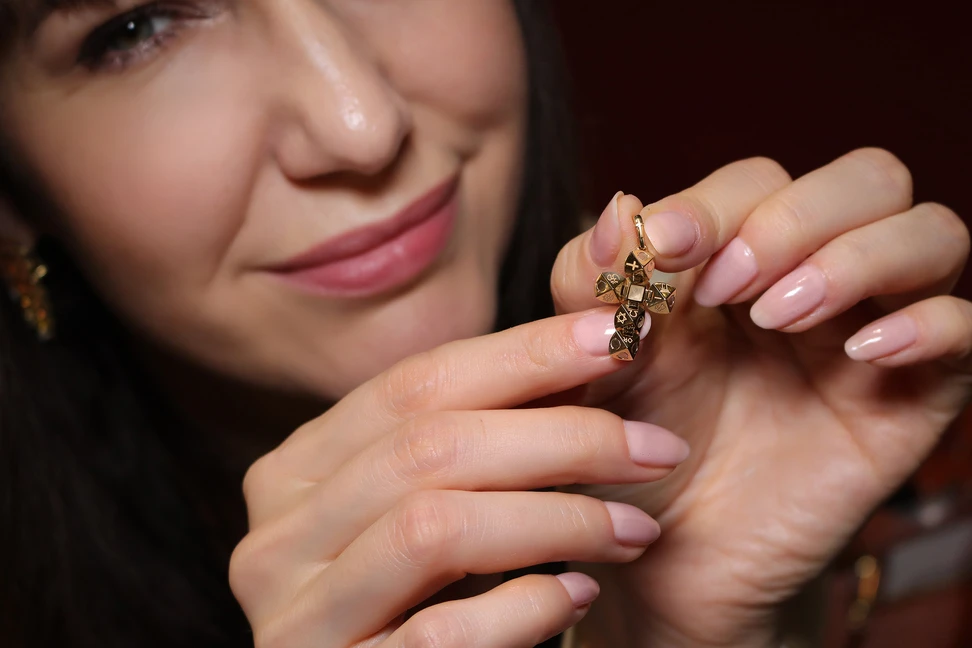
Within this sphere lies a cross that unfolds to reveal Alessio’s personal message: “Do not fight over politics or religions but instead act with the greatest human value: LOVE”
A Hidden World: The Dome Within a Dome
Just when I thought I had seen it all, Alessio turned the ring once more, revealing its final secret. Beneath the structure lies a micromosaic—a miniature recreation of the 16 sections that decorate the interior of St. Peter’s dome. Meticulously composed by artist Luigina Rech, more than 2,000 tesserae were placed to complete the design, which took more than 600 hours. A view usually reserved for those who look up in awe within the basilica, this concealed artwork exists only for the wearer—a secret space for beauty and contemplation.
A Testament to Love and Human Creativity
The Jubilee Ring is a world unto itself, where art converges with history, spirituality, and craftsmanship. Each tiny door, each ancient pigment, each hidden message speaks to the power of creation as an act of love. Ultimately, it’s a jewel that captures everything I love about this art form—its ability to hold history, emotion and human ingenuity within a single, miniature masterpiece.

WORDS
Katerina Perez is a jewellery insider, journalist and brand consultant with more than 15 years’ experience in the jewellery sector. Paris-based, Katerina has worked as a freelance journalist and content editor since 2011, writing articles for international publications. To share her jewellery knowledge and expertise, Katerina founded this website and launched her @katerina_perez Instagram in 2013.
